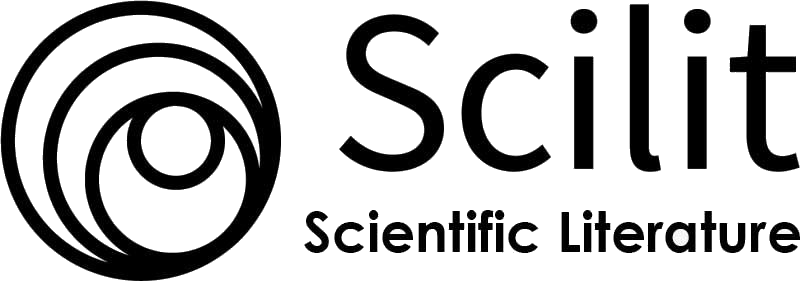Validation of Designing a Photovoltaic Energy (PVE) System to Enhance Urban Life and Reduce Fossil Fuel Dependence in Tehran and Baghdad
DOI:
https://doi.org/10.58425/jegs.v4i1.342Keywords:
Photovoltaic energy, environment, fossil fuel, electrical energy, carbon emissions, urban citiesAbstract
Aim: This study aimed to design and validate a grid-connected photovoltaic (PV) system to assess its potential for reducing CO₂ emissions and enhancing urban sustainability in Tehran and Baghdad.
Methods: The study employed a tilt angle of 30°/0° for both sites. A total of 3,654 photovoltaic modules were installed, covering an area of 9,990 m², with 57 inverters integrated into the system. The total system power capacity was 2,138 kW, incorporating components for storage and self-consumption.
Results: The results demonstrated a significant reduction in CO₂ emissions over a 15-year system lifetime—amounting to 41,168.7 tons in Iraq and 25,814.1 tons in Iran. In terms of generated emissions, Iraq recorded 1,169.78 tons of CO₂, while the grid lifecycle emissions were 869 tons in Iraq and 575 tons in Iran. The annual system production was 1,833.9 MWh in Iraq and 1,663.5 MWh in Iran. These findings highlight the system's strong potential in mitigating carbon dioxide emissions and offering a sustainable energy solution for urban environments with high pollution levels.
Conclusion: This work serves as a foundational contribution to the broader understanding of how oil and gas exporting countries can harness photovoltaic technologies to address escalating energy demands. This is particularly in densely populated urban areas while simultaneously avoiding environmental crises, such as those currently experienced in Tehran.
Recommendations: There should be development and implementation of strategic approaches for integrating connected photovoltaic systems play a critical role in strengthening energy security. Addressing emerging challenges, and establishing effective pathways to reduce and prevent environmental degradation in the future.
References
Holechek, J. L., Geli, H. M., Sawalhah, M. N., & Valdez, R. (2022). A global assessment: can renewable energy replace fossil fuels by 2050? Sustainability, 14(8), 4792.
Masson-Delmotte, V.; Zhai, P.; Pirani, A.; Connors, S.L.; Péan, C.; Berger, S.; Caud, N.; Chen, Y.; Goldfarb, L.; Gomis, M.I.; et al. (Eds.) IPCC Climate Change 2021: The Physical Science Basis. Contribution of Working Group I to the Sixth Assessment Report of the Intergovernmental Panel on Climate Change; Cambridge University Press: Cambridge, UK, 2021; in press.
WMO Statement on the State of the Climate 2020: Impacting Indicators 2021; WMO: Geneva, Switzerland, 2020; 51p.
Steffen, W., Rockström, J., Richardson, K., Lenton, T. M., Folke, C., Liverman, D., ... & Schellnhuber, H. J. (2018). Trajectories of the Earth System in the Anthropocene. Proceedings of the national academy of sciences, 115(33), 8252-8259.
Takagaki, M., Hara, H., & Kozai, T. (2020). Micro-and mini-PFALs for improving the quality of life in urban areas. In Plant Factory (pp. 117-128).
Su, X., & Wang, K. (2025). Carbon Dioxide Emission Reduction Effects of Non-economic Sector Tournaments: Evidence from the National Civilized City Selection. Journal of Asian Economics, 101902.
Mustafa Faisal Ghlaim, Asmaa Miran Hussein, & Mustafa Fakhir Hussein. (2025). Reduc-ing Carbon Footprints with On-Grid Photovoltaic Systems: A Path to Sustainability. International Journal of Emerging Research in Engineering, Science, and Manage-ment, 4(1), 01–10. https://doi.org/10.58482/ijeresm.v4i1.1
W. Hoffmann, “PV solar electricity industry: Market growth and perspective,” Solar Ener-gy Materials and Solar Cells, Vol. 90, no. 18–19, pp. 3285–3311, Sep. 2006. https://doi.org/10.1016/j.solmat.2005.09.022.
Faisal Ghlaim, M., Miran Hussein, A., & Fakhir Hussein, M. (2025). Green Hydrogen in the Middle East: Challenges and Opportunities for Sustainability and Compliance. In-ternational Journal of Emerging Research in Engineering, Science, and Management, 4(1), 11–21. https://doi.org/10.58482/ijeresm.v4i1.2
Mousavi, S. M., Mobarghaee Dinan, N., Ansarifard, S., Darvishi, G., Borhani, F., & Naghibi, A. (2024). Assessing the impact of global carbon dioxide changes on atmos-pheric fluctuations in Iran through satellite data analysis. Journal of Water and Cli-mate Change,15(6), 2774-2791.
Alcibahy, M., Gafoor, F. A., Mustafa, F., El Fadel, M., Al Hashemi, H., Al Hammadi, A., & Al Shehhi, M. R. (2025). Improved estimation of carbon dioxide and methane using machine learning with satellite observations over the Arabian Peninsula. Scientific Reports, 15(1), 766.
Althor, G., Watson, J. E. M. & Fuller, R. A. (2016). Global mismatch between green-house gas emissions and the burden of climate change. Sci. Rep. 6(1), 1–6. https://doi.org/10.1038/srep20281
Liu, D., Guo, X. & Xiao, B. What causes the growth of global greenhouse gas emissions? Evidence from 40 countries. Sci. Total Environ.
Haidari, M., Iranmanesh, Y., Jaafari, A., Pourhashemi, M., Henarah, J., Jahanpour, F., ... & Fani, B. (2025). The multidimensional influences of environmental factors on car-bon storage: Evidence from Zagros Forests of Iran. Ecological Engineering, 212, 107523.
Yousefi, R., & Mokaramian, S. Investigation of Gas Pollutant Emissions from Fossil Fuel Combustion in Iran from 2000 to 2017.
Nasehi, S., & Nohegar, A. (2025). Analyzing the relationship between spatial distribution of air pollutant concentrations and land cover over Iran. Pollution, 11(2), 246-260.
Talkhabi, H., Ghalehteimouri, K. J., Mehranjani, M. S., Zanganeh, A., & Karami, T. (2022). Spatial and temporal population change in the Tehran Metropolitan Region and its consequences on urban decline and sprawl. Ecological Informatics, 70, 101731.
Rabie, M. S., Timman, Z. L., & Jasim, L. Q. H. (2024). THE IMPACT OF CLIMATE CHANGE ON AIR POLLUTION IN BAGHDAD AND ITS HEALTH IMPLICA-TIONS. Web of Humanities: Journal of Social Science and Humanitarian Re-search, 2(6), 1-15.
Sobhani, Parvaneh. (2024). “Urban development impacts on natural ecosystems in urban protected areas of Tehran province, Iran.” Heliyon 10, no. 23.
Hosseini, S. H., & Hajilou, M. (2019). Drivers of urban sprawl in urban areas of Iran. Pa-pers in Regional Science, 98(2), 1137-1159.
Ardalan, A., Khaleghy Rad, M., & Hadi, M. (2019). Urban water issues in the megacity of Tehran. Urban Drought: Emerging Water Challenges in Asia, 263-288.
Atash, F. (2007). The deterioration of urban environments in developing countries: Miti-gating the air pollution crisis in Tehran, Iran. Cities, 24(6), 399-409.
Naddafi, K., Hassanvand, M. S., Yunesian, M., Momeniha, F., Nabizadeh, R., Faridi, S., & Gholampour, A. (2012). Health impact assessment of air pollution in megacity of Tehran, Iran. Iranian journal of environmental health science & engineering, 9, 1-7.
Ghadami, M., & Newman, P. (2019). Spatial consequences of urban densification policy: Floor-to-area ratio policy in Tehran, Iran. Environment and Planning B: Urban analyt-ics and city science, 46(4), 626-647.
Gheshlaghpoor, S., Abedi, S. S., & Moghbel, M. (2023). The relationship between spatial patterns of urban land uses and air pollutants in the Tehran metropolis, Iran. Landscape ecology, 38(2), 553-565.
Waheeb, R. (2023). Enough Pollution and Let’s Work Towards a Sustainable Environ-ment: Baghdad as An Emergency Case Study. Available at SSRN 4473744.
Hassoon, A. F. (2015). Assessment of air pollution elements concentrations in Baghdad city from periods (May-December) 2010. International journal of energy and envi-ronment, 6(2), 191.
Al-Kasser, M. K. (2021, June). Air pollution in Iraq sources and effects. In IOP Confer-ence Series: Earth and Environmental Science (Vol. 790, No. 1, p. 012014). IOP Pub-lishing.
Hosseinalipour, S. M., Asiaei, S., & Al-Taee, A. A. H. (2024). Performance Study of Dy-namic Intake and Exhaust Façades in Hot and Dry Climates: Iraq Case Study. Fron-tiers in Heat and Mass Transfer, 22(3), 747-767.
Abdulateef, M. F., Majeed, F. A., Al-Alwan, H. A., & Qasim, M. B. (2025). Assessing canyon geometry effect on the thermal comfort in a hot semi-arid climate: Baghdad city as case study. Ain Shams Engineering Journal, 16(2), 103247.
Mohsin, M. M., Beach, T., & Kwan, A. (2020). Consensus-based urban sustainability framework for Iraqi cities: A case study in Baghdad. Heliyon, 6(12).
Danehkar, S., & Yousefi, H. (2025). Developing site selection indices for hydro-pumped storage systems (Case study: Tehran Province, Iran). Energy Storage and Saving, 4(1), 27-37.
Zubaidi, S. L., Al-Bugharbee, H., Muhsen, Y. R., Hashim, K., Alkhaddar, R. M., & Hmeesh, W. H. (2019, October). The prediction of municipal water demand in Iraq: a case study of Baghdad governorate. In 2019 12th International Conference on Devel-opments in eSystems Engineering (DeSE) (pp. 274-277). IEEE.
Savabieasfahani, M., Ahamadani, F. B., & Fadhel, B. T. (2024). Congenital anomalies in Baghdad children born near US military burn-pits: a case-control study showing tung-sten and chromium association with increased odds of disease. Hygiene and Environ-mental Health Advances, 9, 100090.]
. Shahsavari, A., Yazdi, F., & Yazdi, H. T. (2019). Potential of solar energy in Iran for carbon dioxide mitigation. International Journal of Environmental Science and Tech-nology, 16, 507-524
Lujano-Rojas, J., Dufo-López, R., & Domínguez-Navarro, J. A. (2023). Forecasting of electricity prices, demand, and renewable resources. In Genetic Optimization Tech-niques for Sizing and Management of Modern Power Systems (pp. 201–246). Elsevier. https://doi.org/10.1016/B978-0-12-823889-9.00003-5
Yousefi, H., & Shahveran, E. Replacing Fossil Fuel-Based Power Plants with Renewables to Meet Iran's Environmental Commitments in the Electricity Sector. Available at SSRN 4847326.
Department of Environment, “Intended nationally determined contribution, Islamic Republic of Iran," 2015. http://www4.unfccc.int/s ubmissions/INDC/PublishedDocuments/Iran/1/INDCIranFinalText.pdf.
C. P. Carmen Dienst María Yetano Roche, “Implementation of nationally determined contributions - Islamic republic of Iran,” NewClimate Institute for Climate Policy and Global Sustainability PP - Germany, Germany, 2018.
Ministry of Energy (Iran), "Iran Energy Yearbook 2020 (in Persian).” [Online]. Available: pep.moe.gov.ir.
Solaymani, S. (2021). A review on energy and renewable energy policies in Iran. Sustainability, 13(13), 7328
Hassan, Q., Al-Jiboory, A. K., Sameen, A. Z., Barakat, M., Abdalrahman, K. Y. M., & Algburi, S. (2025). Transitioning to sustainable economic resilience through renewable energy and green hydrogen: The case of Iraq. Unconventional Resources, 5, 100124.
Hussein, M. F., Ghlaim, M. F., Hussain, M. F., Akbar, A., Arani, A., & Sheikhzadeh, G. A. (2024). Technical Evaluation and Optimization of the Arrangement of the Small Off-Grid Photovoltaic System in a Case Study in Iraq. Journal of Electrical Systems, 20(11s), 642–664. https://journal.esrgroups.org/jes/article/view/7263
Downloads
Published
How to Cite
Issue
Section
License
Copyright (c) 2025 Mustafa Faisal Ghlaim, Mustafa Fakhir Hussein, Asmaa Miran Hussein

This work is licensed under a Creative Commons Attribution 4.0 International License.
The authors retain the copyright and grant this journal right of first publication. This license allows other people to freely share and adapt the work but must give appropriate credit, provide a link to the license, and indicate if changes were made. They may do so in any reasonable manner, but not in any way that suggests the licensor endorses them or their use.










